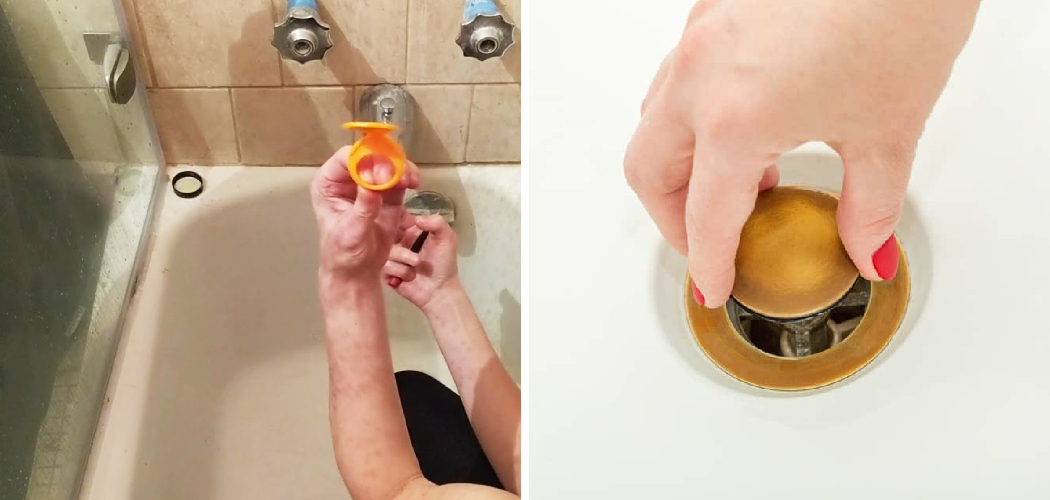Have you ever found yourself in a situation where you need to use your bathtub and suddenly realize that the stopper is missing? This can be a frustrating experience, but there is a simple solution – making your own bathtub stopper!
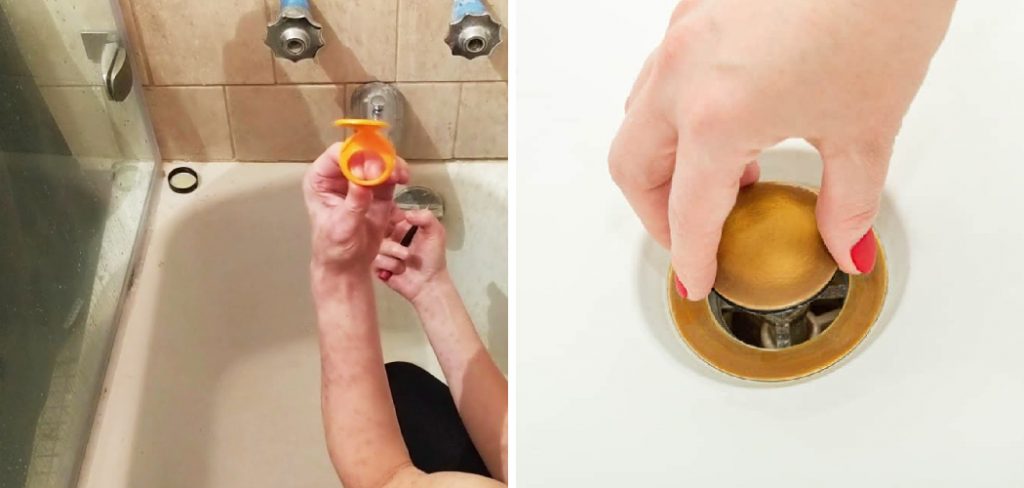
In this blog post, we will share a step-by-step guide on how to make a bathtub stopper on your own. With just a few household items and some creativity, you can have a working bathtub stopper in no time.
Can You Make a Bathtub Stopper?
If you’re tired of constantly losing your bathtub stopper or just want to save a few bucks by making your own, the good news is that it’s possible! With a few simple materials and a bit of patience, you can easily make a bathtub stopper yourself. One option is to use a rubber sink stopper and tie a piece of string to it.
Simply drop the stopper into the drain and leave the string hanging out, making it easy to remove when you’re done. Another option is to create your stopper using a rubber ball and an adhesive such as silicone, creating a custom fit for your tub. With a little bit of creativity and innovation, you can have a functional and personalized bathtub stopper in no time.
Why Should You Make a Bathtub Stopper?
There’s nothing quite as frustrating as a bathtub with a faulty drain. When you’re ready to soak in a warm bath after a long day, the last thing you want to deal with is the water slowly draining out, leaving you with a disappointing and diluted tub. But fear not because a simple solution is just a few DIY steps away.
By making your own bathtub stopper, you’ll have the power to control the drain and keep as much water in the tub as you desire. Plus, it’s an easy and affordable project that anyone can tackle, even if you’re not exactly a DIY expert.
Not only will you save money on expensive store-bought stoppers, but you’ll also add a personal touch to your bathroom and feel a sense of satisfaction in knowing that you made it yourself. So why settle for a subpar bath experience when you can create your own bathtub stopper and have a spa-like oasis in your own home?
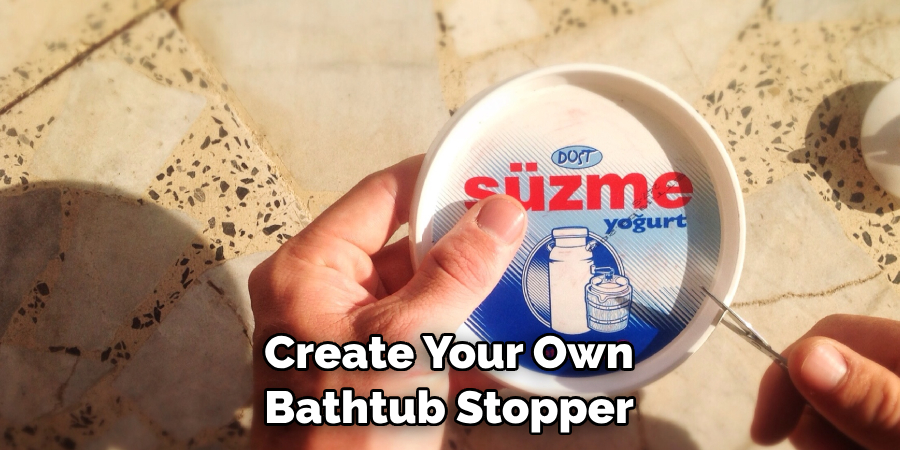
How to Make a Bathtub Stopper: Step-by-Step Guide for Making Your Own
Step 1: Gather the Necessary Supplies
The first step in making a bathtub stopper is to gather all of the necessary supplies. You will need a screwdriver, pliers, a drain plug, and some sealant or plumber’s putty. Make sure that you have all of the items before you begin so that you can complete the job without any delays.
Step 2: Remove the Old Stopper
Once you have gathered all of your supplies, it is time to remove the old stopper from your bathtub. Start by using a screwdriver to loosen the screws on either side of the existing stopper. Once they are loosened, use pliers to remove them completely. Then, pull out the old stopper and discard it.
Step 3: Clean Out the Drain
Once you have removed the old stopper, it is important to clean out any debris that may be in your bathtub drain. Use a damp cloth or sponge to wipe away any dirt or grime that has built up around the edges of your drain opening. This will help ensure that your new stopper fits properly and seals tightly against leaks.
Step 4: Install the New Stopper
Now, it is time to install your new bathtub stopper! Start by placing it into position over your drain opening and then secure it with screws if necessary. Make sure that it is properly aligned before tightening down any screws as this will help prevent leaks later on down the line.
Step 5: Apply Sealant or Putty
Next, apply a thin layer of sealant or plumber’s putty around the edges of your new stopper where it meets with your drain opening. This will help create an airtight seal between both surfaces which will help prevent water from leaking out of your tub when you take a shower or bath.
Allow this material to dry completely before proceeding further with the installation process as this will ensure proper adhesion between surfaces for maximum leak prevention capability in future use case scenarios!
Step 6: Test for Leaks
Once everything has been installed and sealed properly, fill up your tub with water and check for any signs of leaks around where your new stopper meets with its drain opening surface area- if there are no visible signs then congratulations!
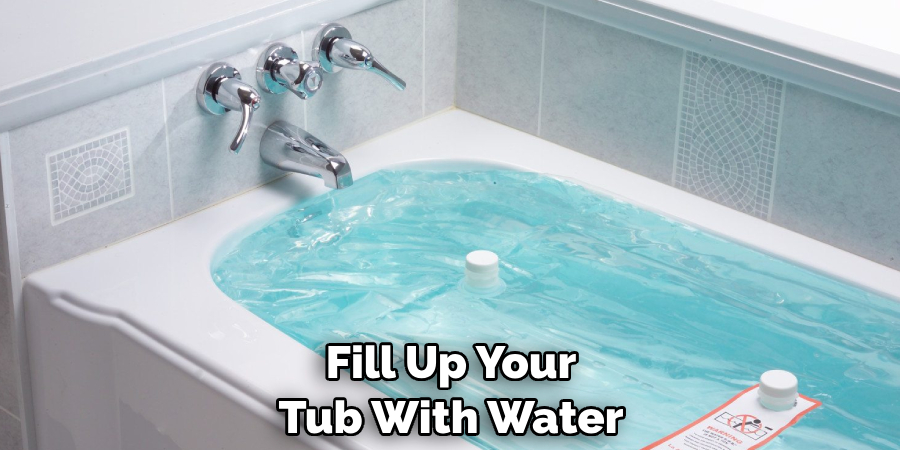
You have successfully installed a new bathtub stopper without any major issues occurring during the installation process itself; however, if there are still minor leaks present then go back through the steps outlined above again until those issues are resolved correctly!
Step 7: Enjoy Your New Stopper!
Now that everything has been properly installed and tested for leaks, enjoy using your new bathtub stopper! It should provide years of reliable service if maintained correctly over time so make sure to always follow manufacturer instructions when cleaning or replacing parts as needed- doing this will ensure optimal performance from start to finish every single time!
5 Considerations Things When You Need to Make a Bathtub Stopper
1. Type of Drain
The first consideration when making a bathtub stopper is the type of drain in your bathtub. Depending on the type of drain, you may need to purchase a specific type of stopper or adapter that will fit into the drain. There are several different types of drains, including pop-up, toe-touch, and lift-and-turn drains, so it is important to identify which type you have before selecting a stopper.
2. Material
When selecting a bathtub stopper, it is important to consider the material that it is made from. You want to choose a material that will be durable and long-lasting, such as stainless steel or brass. Additionally, some materials can corrode over time if they come into contact with water for extended periods of time, so it is important to select one that won’t corrode easily.
3. Size
Another consideration when selecting a bathtub stopper is size. You want to make sure that you choose one that fits snugly into your drain so that it doesn’t slip out when the water level rises or falls. If the stopper is too small or too large for your drain, it may not be effective at keeping water in or out of your tub.
4. Design
The design of the bathtub stopper should also be taken into consideration when making your selection. Some designs are more aesthetically pleasing than others and can add style to your bathroom decor. Additionally, some designs offer additional features such as adjustable flow rates or anti-skid surfaces for added safety and convenience in the bathroom.
5. Price
Lastly, price should be taken into consideration when purchasing a bathtub stopper as there are many different types available at varying price points depending on features and quality levels offered by different manufacturers and retailers.
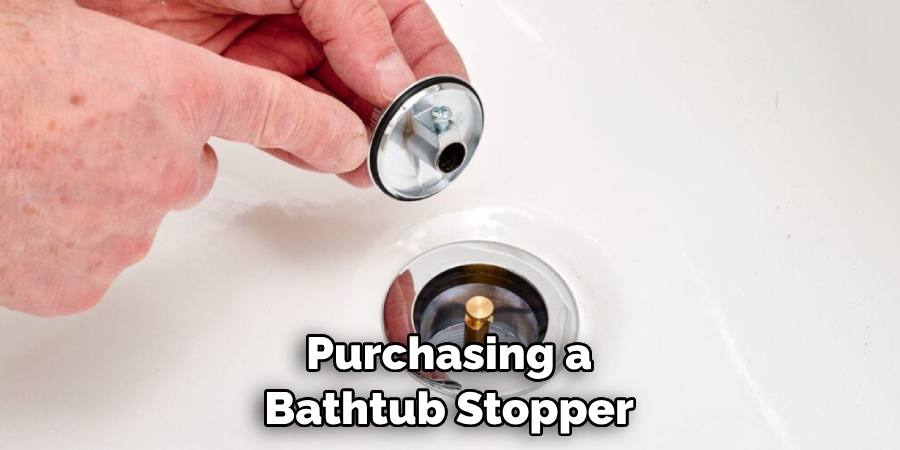
It is important to compare prices between different options in order to ensure that you get the best value for your money while still getting a product that meets all of your needs and expectations.
Benefits of Making a Bathtub Stopper
A relaxing soak in the bathtub is one of life’s simple pleasures. But if you’re constantly battling with standing water, that serene atmosphere can quickly evaporate. The solution?
A bathtub stopper! Not only does it prevent water from draining out too quickly, it also allows you to control the depth of the water. And what’s more, making your own stopper comes with its own benefits. It’s a great way to put your DIY skills to the test and save yourself some money.
Plus, you can customize it to fit your unique tub and personal style. So, why settle for a lackluster bath experience when you can create your own stopper and enhance the relaxation factor? Dive in and take control!
Some Common Mistakes People Make When Trying to Make a Bathtub Stopper
Few things are more frustrating than standing in a tub that won’t hold water. Unfortunately, many people end up in this predicament because of common mistakes made while trying to install or repair a bathtub stopper.
One of the most frequent errors is choosing the wrong type of stopper for the drain, which can result in leaks and poor water retention. Another mistake is failing to clean the stopper and drain before installation, leading to buildup and blockage over time.
Even small oversights like not using enough plumber’s putty or installing the stopper upside down can lead to big problems down the line. By taking the time to research and carefully install their bathtub stopper, homeowners can avoid these common pitfalls and enjoy a watertight, relaxing bathing experience.
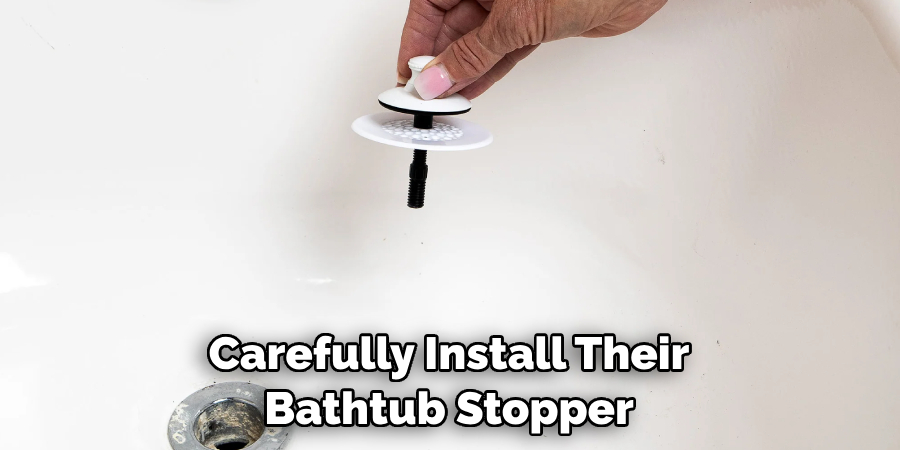
Conclusion
Making your own bathtub stopper is a simple and cost-effective solution to a common problem. With just a few household items, you can create a functional stopper that will allow you to enjoy your bath without any interruptions.
By following the steps listed in this guide, you can create your own DIY bathtub stopper in just a few minutes. We hope this post has been helpful, and happy soaking! Thanks for reading our post about how to make a bathtub stopper.

